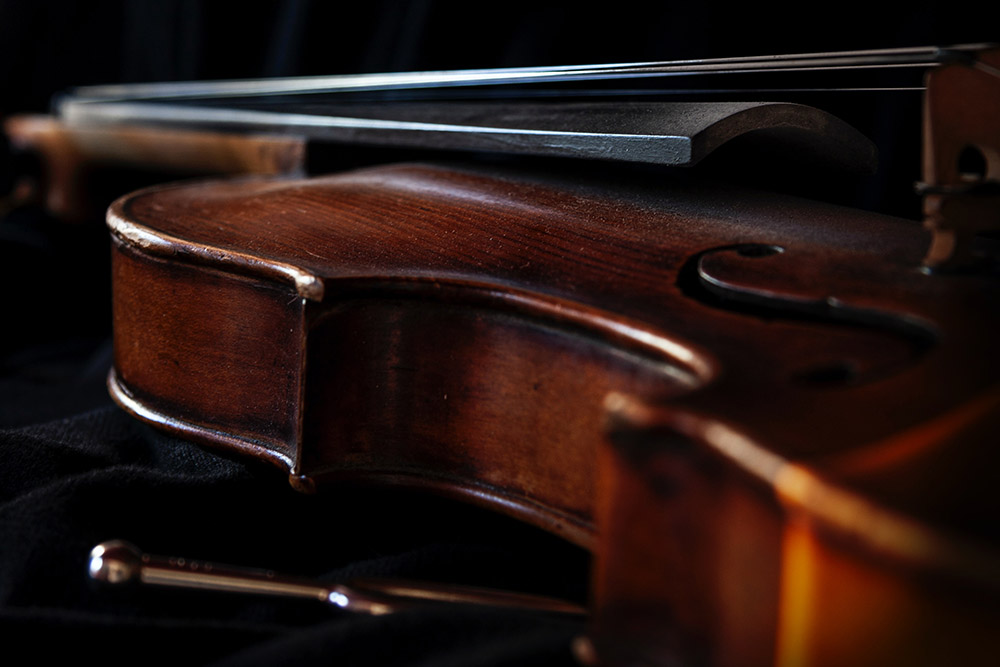Every Child Can Learn
Over the last half century, the Suzuki Method has become the preeminent method of teaching children music here in America, and across much of the globe. Japanese violinist Shinichi Suzuki discovered that just as children all over the world learn to speak their native tongue, they could also learn music to high level of fluency. He began to apply principles of language acquisition to the learning of music, and called his method the mother-tongue approach.
The ideas of parental responsibility and involvement, loving and positive encouragement, much repetition of desired execution, and daily listening to excellent recordings of the child’s music are some of the unique features of this approach to Suzuki lessons.


Parent Involvement
Children learn to speak not only through listening and being surrounded by a language, but also by gentle coaching and encouragement from their parents. Similar to the language acquisition process, parents are centrally involved in the musical development of their child in the Suzuki approach. They themselves need to learn the fundamentals of the instrument so that they are able to effectively coach and teach the child at home, as well as showing their child importance they place on the study of music.
Parents of KSA students must regularly attend lessons and take careful notes of each lesson so that they can practice effectively with their child each day at home between lessons. Parents work with their KSA teacher to create an enjoyable and powerful learning environment for the child. Thus, the parents, along with the child and the teacher, form a powerful and positive triangle in the Suzuki approach.
More About the Suzuki Method »
Early Beginning
The early years are crucial for developing mental processes and muscle coordination. Listening to music should begin at birth; formal training may begin at age three or four, but it is never too late to begin.
Listening
Children learn words after hearing them spoken hundreds or thousands of times by others. Listening to music every day is important so that your child becomes fluent in the language of music. It is particularly important to listen to the pieces in the Suzuki repertoire so the child has great familiarity with them before trying to learn the pieces themselves.
Repetition
Constant repetition and review is essential in learning to play an instrument. Children do not learn a word or piece of music and then discard it. They add it to their vocabulary while continuing to use words that they learned earlier. Students will go through this same process as they work their way through the Suzuki repertoire at the KSA. Even as students progress they continue to review and rework the material they learned previously, allowing them to add greater and greater fluency to their technique as well as develop new technical abilities.
Learning With Others
In addition to private Suzuki lessons, children participate in regular group lessons and performance at which they have fun, learn from, and are motivated by each other. These sessions also help to create a sense of community in the KSA family.
Graded Repertoire
Children do not practice exercises to learn to talk, but use language for its natural purpose of communication and self-expression. Pieces in the Suzuki repertoire are designed to present technical problems to be learned in the context of the music rather than through dry technical exercises.
One of the genius elements of the Suzuki method is the very carefully presented literature, that advances the child through small, incremental steps towards greater instrumental mastery.
Encouragment
As with language, the child’s effort to learn an instrument should be met with sincere praise and encouragement. Each child learns at his/her own rate, building on small steps so that each one can be mastered. Not only will the teacher and parent gently encourage the child achieve their very best, children will also learn to support each other’s efforts, fostering an attitude of generosity and cooperation. A positive learning environment is of the utmost importance for the children’s long-term musical and emotional development. Dr. Suzuki’s ultimate goal was not the training of young virtuoso musicians through his instruction method, but the nourishing of moral and fine people through the medium of studying musical instruments.
The fact that many students become outstanding musicians and instrumentalists is a lovely byproduct of Suzuki lessons, but learning how to solve complex challenges, learning the emotional and mental discipline that come with studying an instrument in this method, growing in the appreciation of and desire to create beauty, and feeling the support and richness of a musical community of peers are all routes towards educating and nourishing the whole individual. These aims are fostered from the positive encouragement of the child’s efforts by their parents, teacher, and peers.
